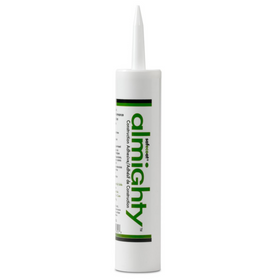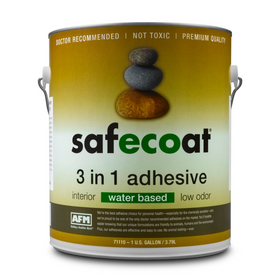
California's Green Idea House
Last Updated: Apr 13, 2025It’s not every day that actor and environmentalist Ed Begley, Jr., who is also famous for building a LEED Platinum home in Los Angeles, performs a ribbon-cutting ceremony at your house. Or that more than 5,000 people tour your home before and after construction, including a delegation from Fukushima, Japan. Or that Al Muratsuchi, a member of the California State Assembly, honors the anniversary of your net-zero energy, zero-carbon case study house with an Environmental Stewardship Award.
If, however, you’re Robert and Monica Fortunato, and you transformed your 1959 Hermosa Beach home into the Green Idea House, then perhaps none of this comes as a surprise. The family’s successful efforts to affordably retrofit their home to meet net-zero, zero-carbon standards have resulted in multiple awards, international recognition, and the creation of a community around making sustainability available to everyone.
“We had the ribbon-cutting ceremony after the first year when we really understood the energy bills,” says Robert Fortunato. The family moved into their renovated home, with an additional 800 square feet, in 2012. The energy systems “over-generate by 2.5 megawatt-hours a year, which allows us to power two electric cars and still be net-zero,” he says. “It’s all clean energy coming off the solar panels on my roof. If this was all possible eight years ago, it’s possible for everybody now.”
Looking to the Ancients for Passive Solar
In 2002, the Fortunatos noticed soot accumulating outside their newborn son’s bedroom window. They also realized, after the birth of their son, that they needed additional space to accommodate an office for Robert (he works as a consultant). They decided to renovate into an economical, carbon-emission-free, zero-net-energy home.
“When we started looking at examples of sustainable homes, we found mechanical areas that looked like a boiler room of a submarine,” he says. “I didn’t want to build that, maintain that, pay for that. I wanted the house to be simple and affordable. You have to be smart enough to design it well from the start.”
Table of Contents
- Solar-Powered Electric House
- The Smartest Dumb House on the Block

After a trip to Mesa Verde, he considered how ancient peoples built their dwellings to maximize the sun during the winter months and block the heat during the summer. “We visited in the middle of June and took a picture at 2 p.m.,” he recalls. “Later, it occurred to me that the dwelling was in full shade in the middle of the hottest part of the year because of the 12-foot overhang. They knew exactly how a south-facing house in the summer doesn’t get sun because of the overhang, and how in the winter the sun can reach back into the cave and heat the rock, which radiates the heat back at night for free.”
He wanted to do something similar. The Fortunatos and their team eliminated the need for air conditioning by installing a five-foot overhang along the roof, which shades the home in the summer. In winter, sun through double-pane windows on the southwest wall heats the living spaces. The garage is heated passively via a window in the insulated garage door.

A chimney in the stairwell ventilates the house; warm air rises naturally and leaves through vented skylights and a window. The team used ThermalCORE phase-change drywall on many of the ceilings and on the living-room wall to help regulate room temperatures.
The house was also super-insulated. Behind the ThermalCORE drywall are 2 “x4” framing filled with cellulose insulation and two layers of staggered BlueRidge fiberboard sheathing. The structure is air sealed. The TPO roof with a .46 reflectivity factor has an R28 value.
The Green Idea House has two drain-water heat exchangers. Upstairs, as hot water from the shower goes down the drain, a RenewABILITY Power Pipe transfers the heat to the cold-water pipes supplying the shower (a vertical drop). Downstairs, an Eco-drain hot water heat exchanger does something similar, but over a horizontal run.
The key to affordably renovating the house was to think holistically, Fortunato explains. “The overhangs, insulation, and air sealing heat and cool the house naturally. Their cost, then, would be more than offset by the smaller mechanical heating and cooling systems that needed to be installed.”

Solar-Powered Electric House
Twenty-six photovoltaic solar panels were oriented to the southwest and produce 6.5 kW of electricity. At $18,000 after rebates, Fortunato says, they were the family's biggest expense. “Today, those solar panels cost 50 percent less, so there’s no reason not to do solar now.”
In the garage are two GE heat pump water heaters with an efficiency of 238 percent. One heats the domestic hot water. The other works with the space-heating system. Insulation and burners were stripped off the old gas hot-water tank, which is now used to preheat city water.
The Fortunatos wanted radiant floor heating. But the price tag was steep: $24,000. Too much for the average homeowner. So they went with baseboard heating as well ($12,000). Skylight and windows bring in plentiful daylight. Recessed can or incandescent lighting, equipped with lighting controls, provide supplemental light.

Other sustainable strategies used during the renovation include using FSC certified lumber in the framing. Eighty-year-old redwood salvaged from a Los Angeles building is now the living room ceiling. Recycled permeable Stepstone pavers form an outdoor path. Inside are recycled tiles from Oceanside Glass and Stonepeak.
Moreover, the project recycled 97.5 percent of the demolition waste. The team used existing lumber when possible. A patio was busted up and the material used for garden walls. A 1,200-gallon tank captures rainwater used for landscaping.

The Smartest Dumb House on the Block
“People often ask us if it’s a smart house, which is something completely different from what we’ve done. The Green Idea House is really a dumb house,” Fortunato says, with a laugh, “because it operates itself, heats and cools itself, and doesn’t require a lot of maintenance.”
Ripping out the gas line, he adds, “was considered radical back in 2002. At that time, none of the energy models could capture or calculate what we were trying. Because we’re in an earthquake area, not having a gas line made safe and environmental sense.”
One misstep Fortunato likes to mention relates to the solar array. The team installed the solar after the roof was done. Because construction was well underway, and everyone was so busy, the family forgot to meter. “When we finally got around to hooking up the meter six months later, we found that half the array was not connected properly.”
Another tip? After a couple of years in the home, “the local utility had a severe power surge that wiped out half of our inverters. We now recommend that everyone install whole house surge protectors for all the sensitive electrical equipment in these houses.”
“We’ve learned so many more lessons from living in the house for several years now, and we share those lessons when we give tours or do public speaking,” Fortunato adds. Having designed and completed the retrofit with more than 70 partners, Fortunato is now a sought-after speaker on his family’s experience and enjoys the sense of community that has sprung up around the home. “A whole community has been built around the project and their friends. That’s one of the best parts of this whole Green Idea House project: Interacting with people I might not have otherwise known.”
Camille LeFevre
Camille LeFevre is an architecture and design writer based in the Twin Cities.










